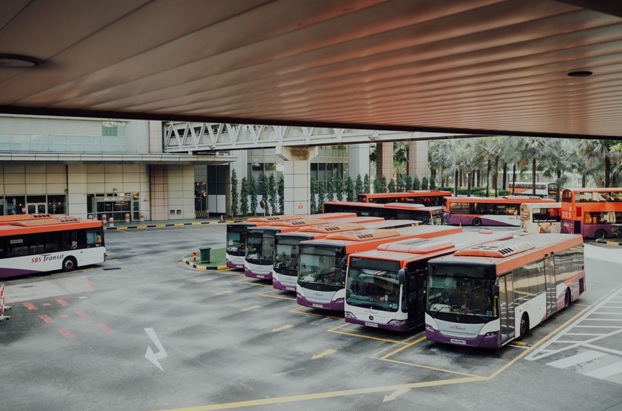Braille Signs in Transportation Hubs: Navigating Terminals with Ease
Picture this: You're standing in the heart of a bustling airport, surrounded by the symphony of conversations, the hurried footsteps of fellow travelers, and the intermittent announcement calls. Amidst this chaos, you need to find your gate, your baggage claim, or perhaps a restroom.
Now, imagine if you're visually impaired. The cacophony and the maze-like terminals pose not just challenges, but a genuine concern for safety and independence.
This is where custom Braille signs step in, quietly and confidently guiding individuals through the intricate web of transportation hubs.
Streamlining Terminal Navigation with Custom Braille Signs
Transportation hubs are a microcosm of the world in motion. From airports and train stations to bus terminals, these hubs are constantly abuzz with people on the go. But in this fast-paced environment, accessibility is not just a buzzword; it's a necessity. And this is where custom Braille signs come into play.
1. Creating Accessible Pathways
Imagine a visually impaired traveler making their way through a maze of corridors in search of their boarding gate. Custom Braille signs strategically placed along the way provide them with clear instructions, directional cues, and essential information. For those individuals without a guide or a service animal to help them navigate, signs are the next best thing.
For example: At a busy train station, custom Braille signs placed near ticket counters guide passengers to the right platforms. These signs ensure that individuals with visual impairments can confidently navigate the station, catching their trains without unnecessary anxiety.
2. Enhancing Independence
Independence is a gift, and custom Braille signs unwrap it for individuals with visual impairments. These signs allow them to be more confident and less reliant on other people. This can be an important source of confidence. Navigating through a transportation hub becomes a journey of empowerment.
In an airport terminal, for example, custom Braille signs help a visually impaired traveler locate airport amenities like restrooms, cafes, and lounges independently. This is especially important, not just so they feel more independent, but can help them feel more comfortable out in public.
3. Uplifting Safety Measures
Even when management puts in a ton of effort to ensure that a transportation hubs is safe for everyone, that may not always be the case.
Custom Braille signs play a pivotal role in enhancing this nuanced sense of safety. Whenever there's an emergency, every second counts. Putting up these signs can help provide individuals with visual impairments with crucial instructions, guiding them to exits and safe zones.
Consider an emergency evacuation scenario in a bus terminal. Custom Braille signs placed near exits provide clear directions, ensuring that individuals with visual impairments can swiftly and safely leave the premises.
4. Seamless Transitions Between Modes of Transport
Intermodal travel, where different modes of transportation intersect seamlessly, can be a daunting experience for anyone. But for individuals with visual impairments, it can be especially challenging.
Custom Braille signs bridge the gap, providing continuity in directions and reducing the stress of transitioning between terminals.
For example: At a major transportation hub, like an international airport, custom Braille signs guide passengers from planes to shuttle buses to rental car centers. This holistic approach ensures that every step of the journey is accessible and straightforward.
Braille Sign Placement Strategies
Navigating through a bustling transportation hub can be overwhelming, especially for individuals with visual impairments. Strategic placement of custom Braille signs is like placing guiding lights in the dark, ensuring that every step is confident and every direction clear.
- Arrival Points: At the very moment a traveler enters a terminal, custom Braille signs are there to greet them. Placed near entrances and ticket counters, these signs provide initial information about key areas and facilities.
- Wayfinding Junctions: Custom Braille signs shine at junctions where paths diverge. Placed at intersections and crossroads, they provide essential directions to different terminals, platforms, or modes of transportation.
- Elevators and Escalators: Vertical movement becomes effortless with Braille signs strategically positioned near elevators and escalators. These signs indicate floor numbers, platforms, and amenities on each level.
- Restrooms and Amenities: Braille signs placed near restrooms, cafes, and lounges help travelers quickly locate essential amenities, ensuring a comfortable and stress-free experience.
- Emergency Exits and Safety: In emergency situations, Braille signs guide individuals with visual impairments to safety. These signs are strategically placed near exits and emergency equipment.
Comparing Braille Signs to Audio Announcements
In the world of accessible transportation, two primary avenues for conveying information to visually impaired travelers are Braille signs and audio announcements.
Each method has its merits, but how do they measure up against each other? Let's explore the strengths and considerations of both.
Braille Signs:
- Effectiveness: Braille signs offer a tactile and permanent source of information. Travelers can access details at their own pace without relying on real-time audio announcements.
- Reliability: Braille signs are always available and consistent. They are not subject to technical glitches, noise interference, or variations in audio quality.
- Inclusivity: Braille signs cater to both individuals with visual impairments and those who are deaf-blind. They are a universal wayfinding solution that doesn't require auditory capabilities.
Audio Announcements:
- Effectiveness: Audio announcements provide real-time information, especially useful for last-minute changes, delays, or gate updates.
- Reliability: While generally reliable, audio announcements can be affected by background noise, unclear pronunciations, or technical issues.
- Inclusivity: Audio announcements are accessible to individuals with visual impairments who don't read Braille, but they may not cater to those who are deaf-blind.
Both Braille signs and audio announcements play vital roles in ensuring the accessibility of transportation hubs. The ideal approach often involves a synergy between the two methods.
Braille signs offer a dependable and universally accessible foundation, while audio announcements provide dynamic, real-time updates.
Together, they create a comprehensive and inclusive experience for all travelers, ensuring that no one is left behind.
Navigating the Chaos with Custom Braille Signs
As the world accelerates, the importance of accessibility and inclusion cannot be overstated. Custom Braille signs, like quiet guides, create pathways for individuals with visual impairments to seamlessly navigate transportation hubs.
Braille Sign Pros understands this significance, offering custom solutions that go beyond signs—they're enablers of independence, safety, and confidence. Reach out to us at 888-297-8577 or sales@braillesignpros.com.







Comments
Post a Comment